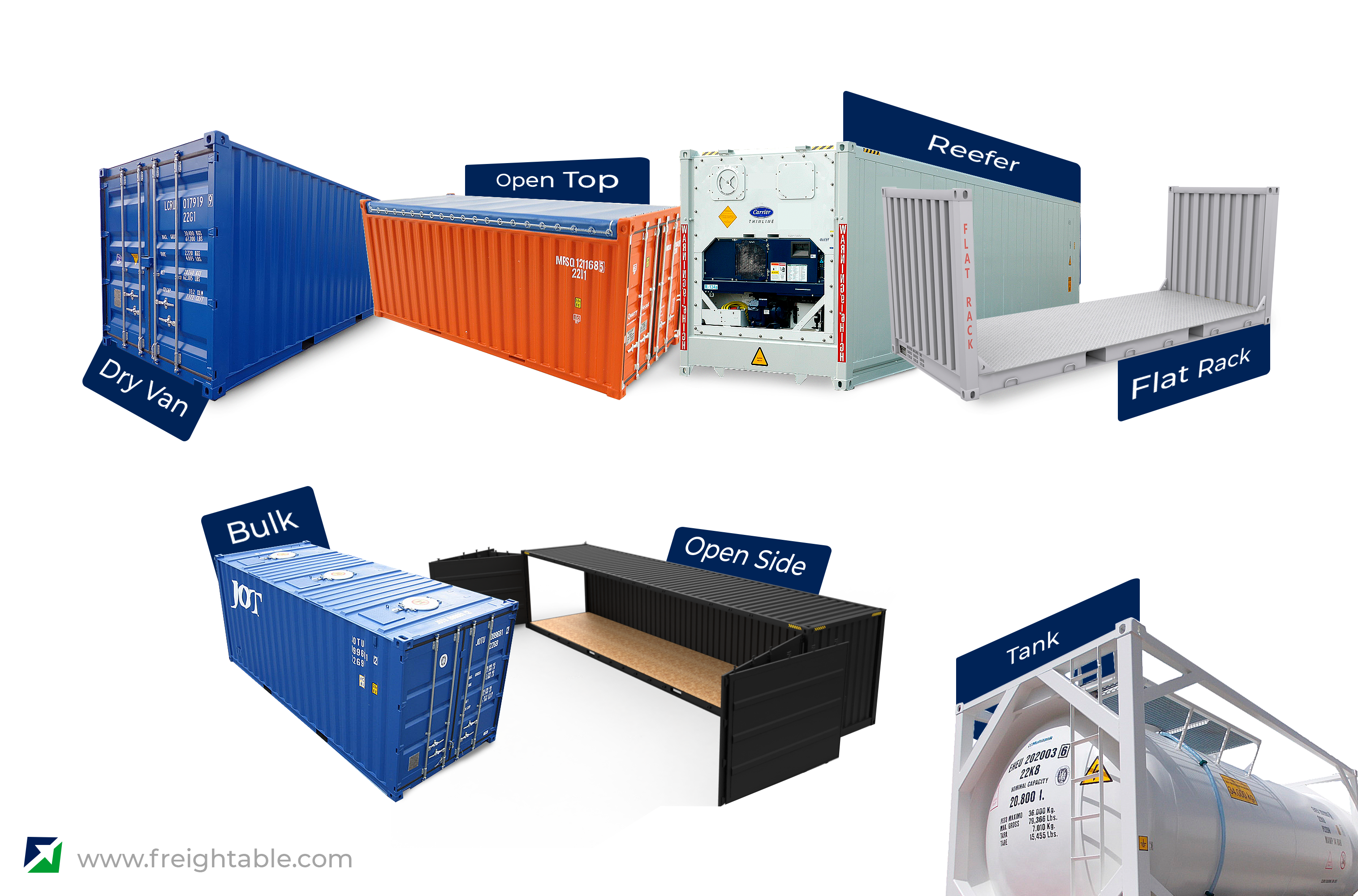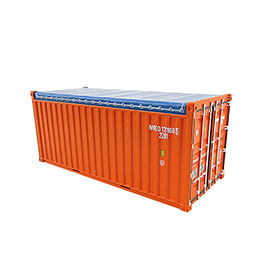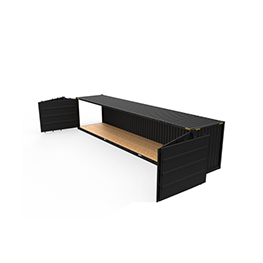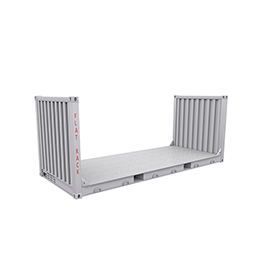Learn about the different types of maritime containers.
Containers are the most important level of packaging for international maritime cargo transport. They came to revolutionize the movement of goods since World War II. The ISO organization established international parameters for its manufacture. Their success is due to the fact that they are hermetic and very durable.
What type of maritime containers are there?
There are different types of containers that anyone who is interested in foreign trade should know about. First we have to think about the type of cargo to be transported, depending on your requirements you can choose one of the following types of containers:

-

Dry Van
They are the most used and the ones that accept the most types of cargo. They are the most basic of them all. Its walls, ceiling and floors are made of metallic materials. When they are closed they are hermetic to protect the merchandise from the impact of all external agents.
-

Open Top
They are similar in dimensions to the other cargo ship boxes, but the detail is on the roof. More specifically, it has to be said that they lack superior coverage. A sturdy tarp is your top cover. They are very useful for bulky cargo or that cannot be deposited from the top. In case they cannot be stacked more, the contractor must pay for the containers that have stopped being transported.
-

Reefer
International maritime freight forwarding companies that move fresh or frozen products need these containers. These tanks have a thermal insulation, in addition, they bring a cooling motor that can be connected to a power source during the trip and control the internal temperature of the box.
-

Bulk
These look similar to the Dry Vans, but have opening systems at the top. The number of hatches located on the roof is usually three. They are designed for bulk merchandise. These containers consist of tubes for the discharge and systems to facilitate the work of the forklifts.
-

Open Side
This container has the front door through the entire side. They were designed for objects that, due to their measurements, could not be stably transported inside regular Dry Van.
-

Flat Rack
These structures are just two walls and one floor. Sometimes they make them without the walls. They are used to move items in unusual ways. Users who decide to use international maritime cargo transport with these containers must pay surcharges in freight rates.
-

Tank
These containers are specially made for the transfer of liquids. Inside they include deposits that can be resistant to chemicals. Interior coatings can insulate corrosive materials, fuels, oils, milk, beer, wine, etc.